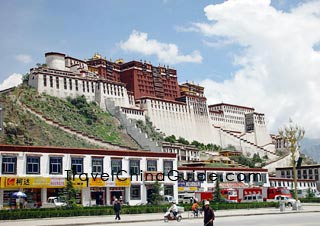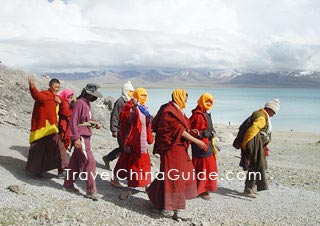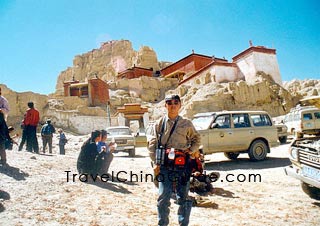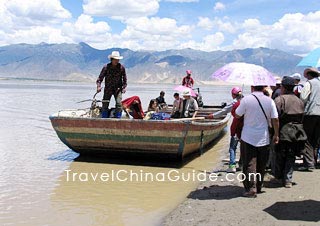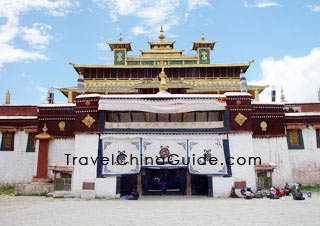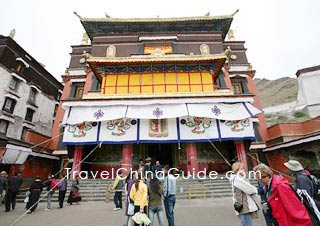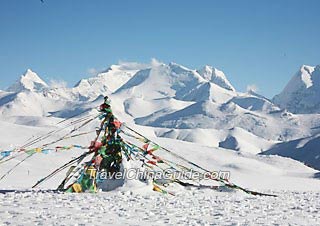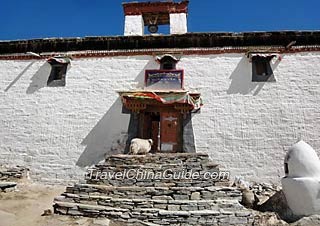Tibet Attractions
Note: Please click each region of Tibet to get more attractions.
Located in the upper reaches of Lancang River, Chamdo Region occupies an important position. In Tibetan, "Chamdo" means water confluence as this place is the confluence of four rivers (Sequ River, Zhaqu River, Angqu River and Lancang River). Due to its old civilization, pious religion beliefs, long history, and unsophisticated folkways, Chamdo has attracted an increasing number of scientists, visitors and Mountaineers every year.The monastery, in Chamdo Town, was founded in 1444 by one of Tsong Khapa's disciples.
Lhasa, the capital city of Tibet, is considered to be a charming city with distinctive flavor. Visitors who first come here not only feel dizzy by its high altitude, but also shock by its rich historical and cultural relics as well as the strong religious atmosphere marked by 1,300 years long history. Potala Palace, Jokhang Temple and Drepung Monastery have become the symbols of this ancient city. Strolling in the city, you may find it is a good example of the perfect combination of the ancient and the modern, religion and secularity, and tradition and innovation.
|
|
At the center of the old Lhasa, Jokhang Temple is the spiritual center of the region.
Located on the Red Hill of Lhasa, it is the symbol of the city, known to the world for its grand constructions, elegant buildings, exquisite artworks and pious religious atmosphere.
Located in the northern part of the high land, Nakchu leaves a strong impression to visitors by its vast Qiangtang Grassland and no man's land. Though being a wild place with small population and the weather condition is not so satisfactory, its unique charm and magnificent view are also the reason why people come here. What's more, in this mysterious land, much wildlife under first national protection inhabit, adding some vitality to the land.
Located near Damxung, it is the highest saltwater lake in the world and the second largest saltwater lake in China.
Located in the extreme western part of the snowy land, Nagri stands at the highest part of Qinghai-Tibet Plateau. Because of the high altitude, the land is severe cold dotted by continuous stretch of snow mountains. Though the color of it remains unchanged white, the celestial and extraordinary snow-capped landscape irresistibly attract the braves to conquer and to seek the beauty of wildness.
Mt. Kailash and Lake Manasarova in the region of Purang are the "Sacred Mountain and Holy Lake" of the Buddhism, Hinduism and the indigenous religion-Bon.
Lake Rakshastal in Tibetan means the "Demon Lake" or "Poisonous Dark Lake", because its salty water is undrinkable for human beings and animals. But the lake scenery is beautiful.
The ruins lie on a hilltop near a river and cover 180,000 square meters.
|
|
Originating from a glacier on the northern Himalayas, it is the highest river on the earth.
Located in the western part, Shannan is believed to be the richest region with the most profound culture. It is the cradle of the locals and the birthplace of their culture. It has countless historical and cultural relics, and has born many celebrities in history that made great contribution to the land. Moreover, the natural scenery here is equally wonderful. It is endowed with picturesque primitive forest, mysterious holy hill and lake, vast grassland and splendid mountains. Overall, it is a beautiful place combining sightseeing, scientific research, recreation and expedition as a whole.
Situated in Dranang, Samye Monastery was completed in 779 under the patron of Trisong Detsen.
Yamdrok Yumtso (or Yamdrok-tso), one of the three holiest lakes on this holy land, lies at Nhagartse, located about 100 kilometers (62 miles) to the southwest of Lhasa.
|
|
Lies 2 kilometer (1.2 miles) west of Shigatse city, the monastery is a very influential monastery.
Lies at the border between China and Nepal, Mount Everest, also known as Mt. Qomolangma, meaning Mother Goddess of the Universe in local labguage, is the highest peak in the world.
How to Travel from Nepal to Tibet
|
|
- Last updated on Jul. 22, 2024 by Brenda Lian -
